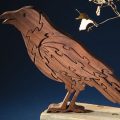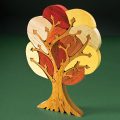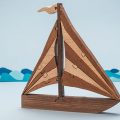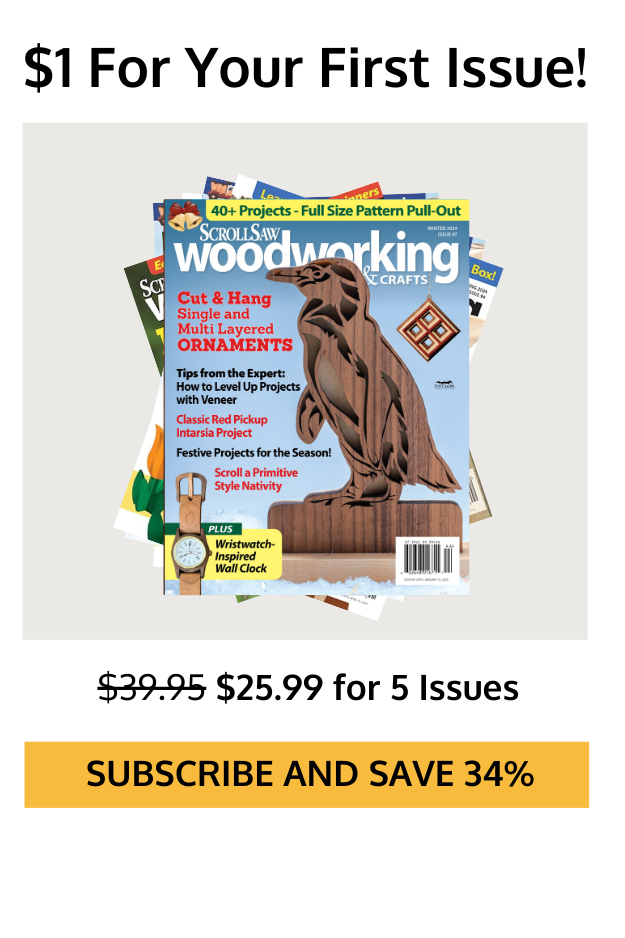Freestanding deer puzzle makes a perfect trophy
By Judy and Dave Peterson
Unlike most of my patterns, this project comes with a lesson. I developed my original deer pattern many years ago, and it wasn’t very successful. A couple of years went by, and I signed up for a wildlife art show where my booth attracted quite a few woodworkers. One of them identified himself as a taxidermist. I asked him what was wrong with my deer pattern. He looked it over carefully, and said, “The legs are too short.” His occupation allowed him to put the problem into words! At home, I added 1/16” (2mm) to each leg above and below the knee, and my deer puzzle was successful.
Before making your first cut, check out our exclusive article on wood selection and learn which wood could work best for you and this project.
Cutting the PuzzleThis puzzle is pretty straightforward. Attach the pattern to the blank, cut the pieces, sand everything smooth, round the edges slightly with a flap sander, and then seal the project with clear Danish oil. |
Materials• Redgum, cherry, or walnut 3/4″ to 1″ (1.9cm to 2.5cm) thick: 6″ x 6 1/4″ (15.2cm x 15.9cm) • Spray adhesive • Danish oil: clear |
Tools• Scroll saw blade: #7 skip-tooth • Sanders: drum, flap |
| About the Authors |
| A former teacher and librarian, Judy Peterson found her niche in life as a woodworker. A winner of many design awards, she sells her puzzles at art shows around the country. Her husband, Dave, runs the record-keeping side of the business. Their book, Scroll Saw Baby Animals, is available at foxchapelpublishing.com. |
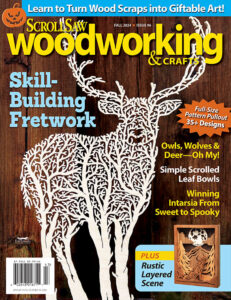 |
Purchase our fall issue! Click for Fall IssueFor more articles like these, subscribe to Scroll Saw Woodworking & Crafts magazine. SubscribePlus! Get mini magazines in your e-mail between printed issues with Short Cuts, our e-mail newsletter. Subscribe to Short Cuts |



